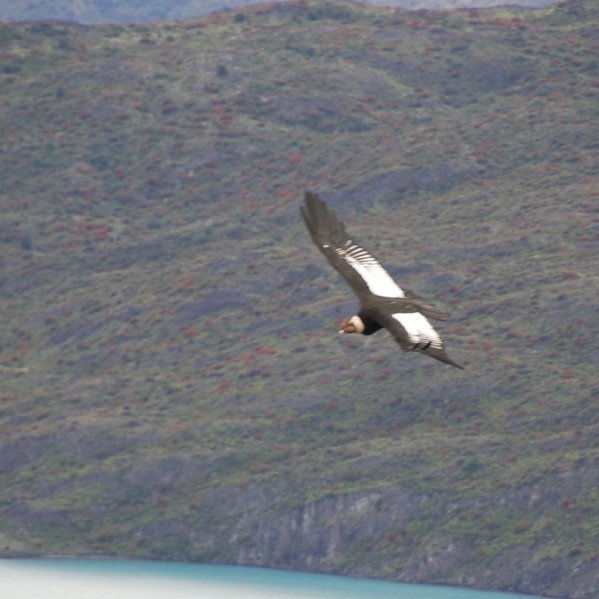Southern crested Caracara in flight
The consensus of scientists is that the current rate of species extinctions is on average somewhere between 100 and 1,000 times greatet than prehuman levels, and that we are moving toward an extinction rate that is on average 10,000 times greater.
Stuart L. Pimm, Maria S. Alves, Eric Chivian, and Aaron Bernstein
Sustaininig Life: How Human Health Depends on Biodiversity
Fortunately, we have parks and preserves. Included are images of the biodiversity in Torres del Paine National Park, Chile.
The Southern crested Caracara (caracara plancus), also pictured at top, makes a loud call that sounds like "kara-kara". Is a scavenger but also preys on small mammals and birds. Member of the falcon family.
Red fox (Pseudalopex culpaeos).
Lesser Rhea (pterocnemia pennata). "Males are responsible for incubation and rearing of chicks." (Birds of Patagonia, Tierra Del Fuego and Antarctic Peninsula: The Falkland Islands and South Georgia.)
Upland geese (Chloephaga picta). The male is white, the female brown.
Upland geese in water.
Great Grebe (Podiceps major) feeds on small fish.
Guanaco (Lama guanicoe). Ubiquitus in the park.
Long-tailed Meadowlark (Sturnella loyca).
Andean condor (Vultur gryphus). Scavenger.
Cliff with condor nests.










